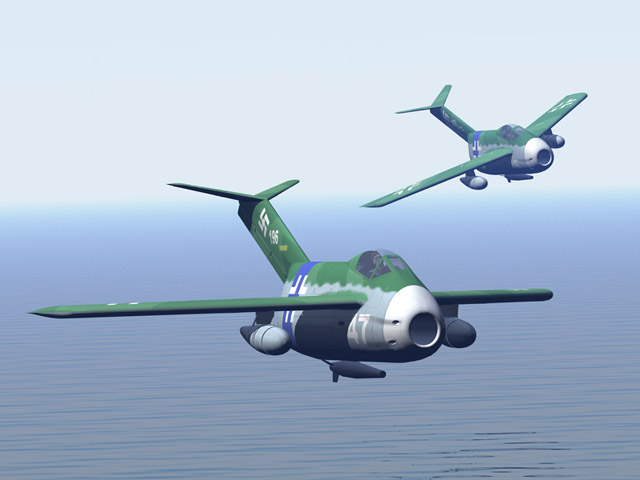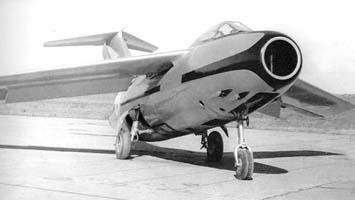Quote from www.luft64.com :
During WWII, German aircraft designers put forth many aircraft project ideas, which ranged from the
practical to the bizarre. Some of these ideas were ahead of their time and reached a more advanced
design stage, and even affect aircraft today. Within the pages of Luft '46 you will find descriptions of
these aircraft projects, illustrated with three-view drawings, model photos and custom color artwork…
check this!:
FW TA 283
This ramjet-powered fighter had along, pointed nose and the cockpit was faired in to the large vertical fin. It was to be powered by a Walter HWK rocket engine for take-off and two Pabst ramjets once operating speed was reached. The wings were mounted low on the fuselage and were swept back at 45 degrees. The ramjets were located on the tips of the sharply swept tailplanes to avoid any disturbance of the airflow. The aircraft sat very low on a retractable nose wheel undercarriage. Armament was to be two MK 108 30mm cannon.
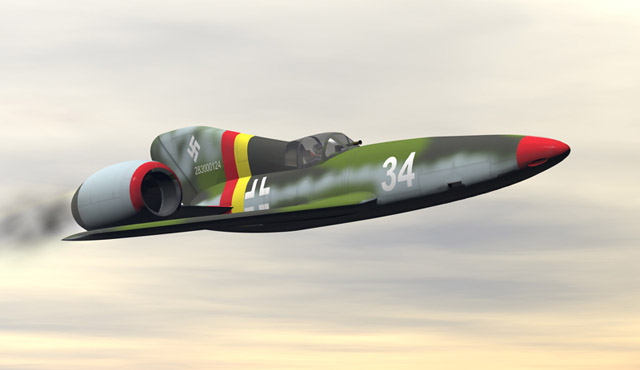
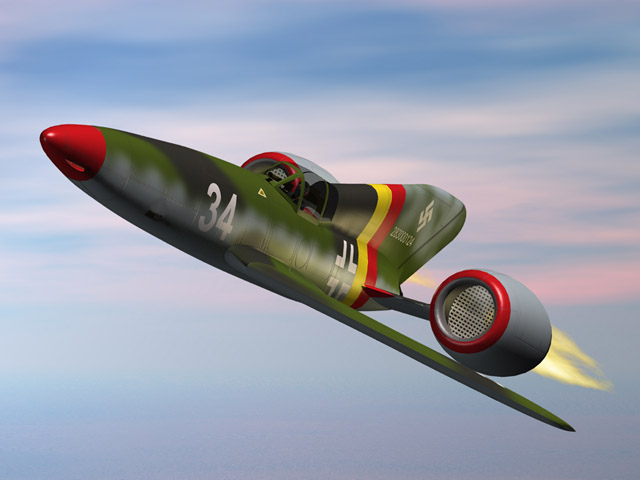
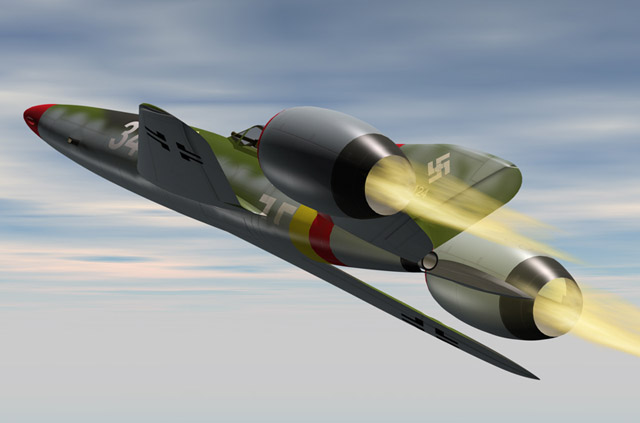
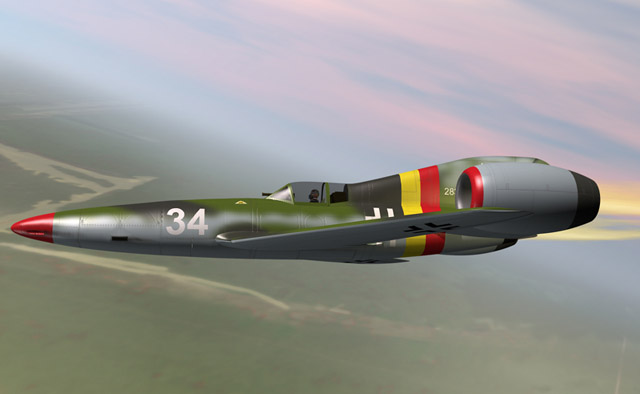
I SAW IN A TOPIC THIS AIRCRAFT:
Focke-Wulf VTOL Project
the aircraft. They rotated in opposite directions, thus canceling out torque problems. At low speeds, control was achieved by varying power to each propeller. Power was to be provided by an unnamed turbojet, and forward propulsion was brought about by sending exhaust through a nozzle located on both trailing edges. The landing gear was very simple, consisting of two main gear legs on either side of the center propellers, and a small tail wheel. A single fin and rudder was provided to help with lateral stability at higher speeds. The single pilot sat in a cockpit nacelle that protruded from the front of the aerofoil section fuselage.
Nothing ever came of this very interesting project…
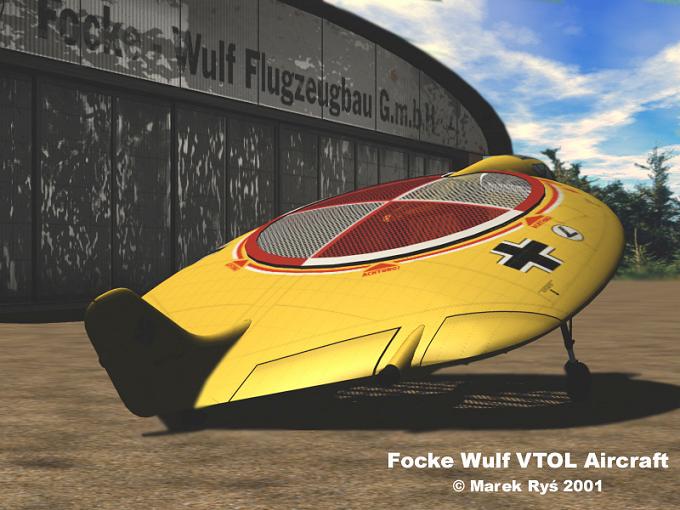
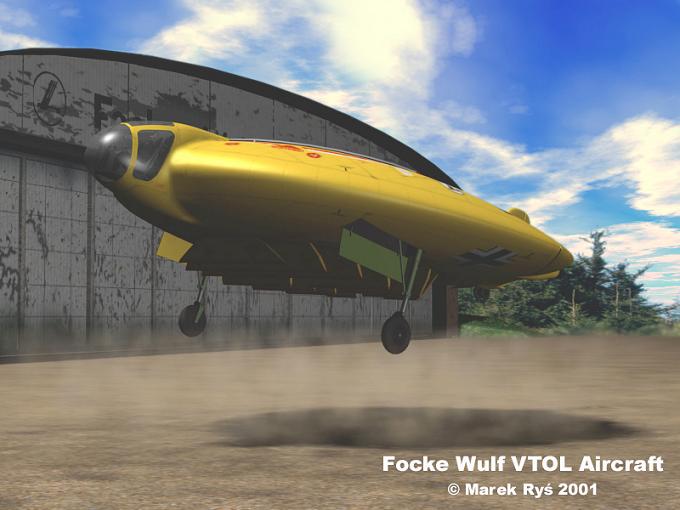
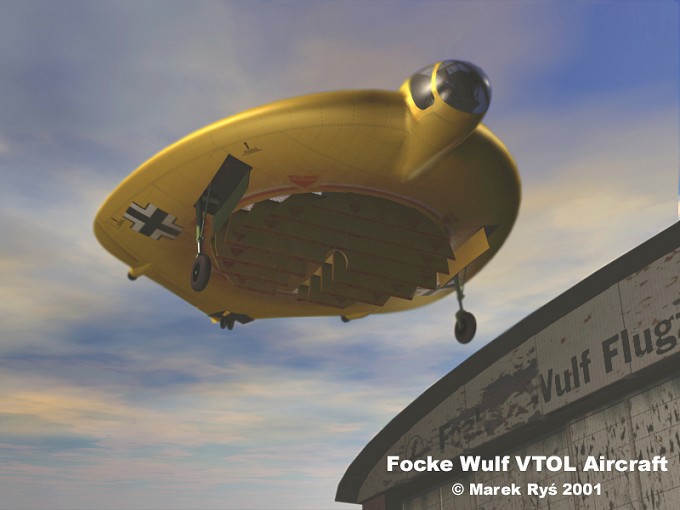
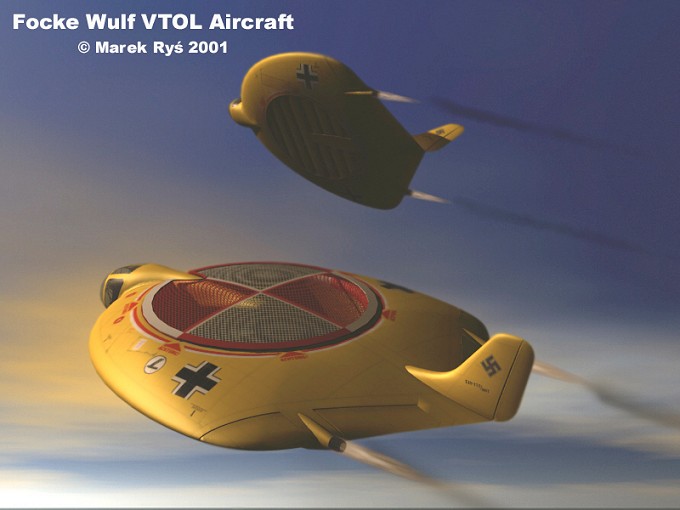
EDIT:
MORE INFO AT:
http://www.luft46.com/

